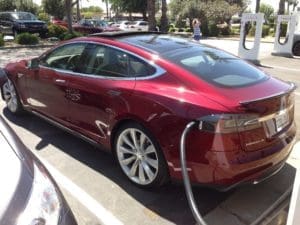 Car companies used to be as old-school as you can imagine, producing vehicles in factories and selling them at dealerships, but as we move toward a future of data-driven vehicles and eventually self-driving cars, we are seeing a hard shift from pure manufacturer to software vendors — and by extension that involves the cloud.
Car companies used to be as old-school as you can imagine, producing vehicles in factories and selling them at dealerships, but as we move toward a future of data-driven vehicles and eventually self-driving cars, we are seeing a hard shift from pure manufacturer to software vendors — and by extension that involves the cloud.
It began perhaps more subtly than self-driving cars with services like General Motor’s Onstar service or VW’s Car-Net. Both are connected car services that can help you when you break down or even help you find a restaurant. They transmit information about your car’s location back to the service and communicate directly with you inside the car. Several years ago, Volvo introduced a service to transmit road safety conditions via the cloud from one Volvo to another as they approached a particular road hazard like black ice or potholes.
We have seen it more directly with Tesla, the all-electric car company, which uses data to understand everything about its cars from wear and tear to battery life, transmitting that data directly to Tesla and helping them to build a better electric car.
As car companies collect more data about their vehicles in the same manner as Tesla, provide an increasingly sophisticated array of in-car services and becoming ever more autonomous, they are making the shift to software vendors and they need to consume and make use of cloud services to make that happen.
The driverless car
While we have learned that true driverless vehicles will require more processing in the car itself, often called at “the edge,” these cars will continue to use the cloud to build and deliver software and to process the data that’s coming from the cars.
These cars are going to have an unsurpassed level of sophisticated software, so much so that the old saying that “every company is a software company,” takes on a whole new meaning. If you want a sense of how serious car companies are about this approach, check out Toyota’s announcement last week that it intends to invest almost $3 billion in software in a push to build self-driving cars. They are talking about hiring thousands of coders who will be writing millions of lines of code.
The company has an ambitious schedule. According to a Bloomberg report, it wants to have self-driving trucks ready to show off that 2020 Winter Olympic Games in Tokyo. All of this requires a combination of edge processing with cloud processing to produce something that can drive itself.
The cloud is going to be playing a much bigger role in your car in the future, and it will be even more so as vehicles gain increasing autonomy.
Photo: Jusdafax Used under CC BY-SA 3.0 license, via Wikimedia Commons
